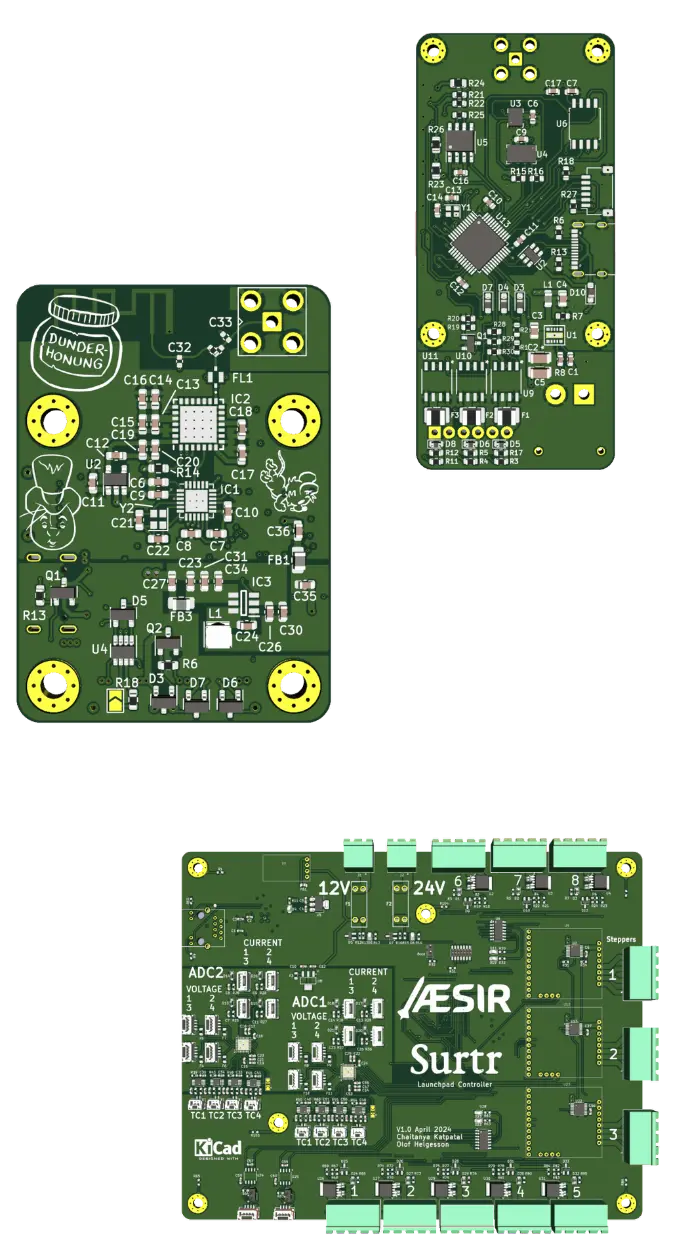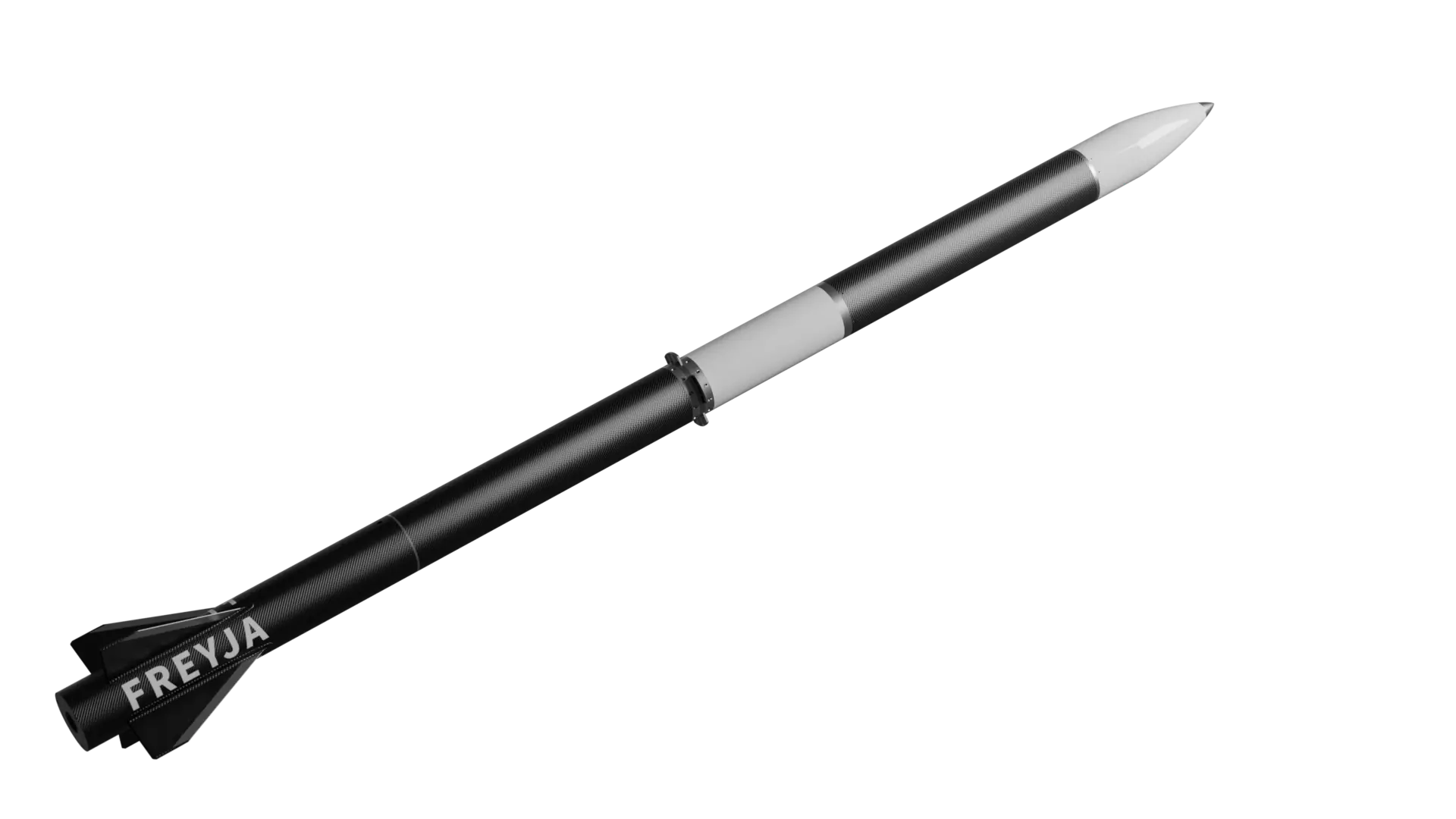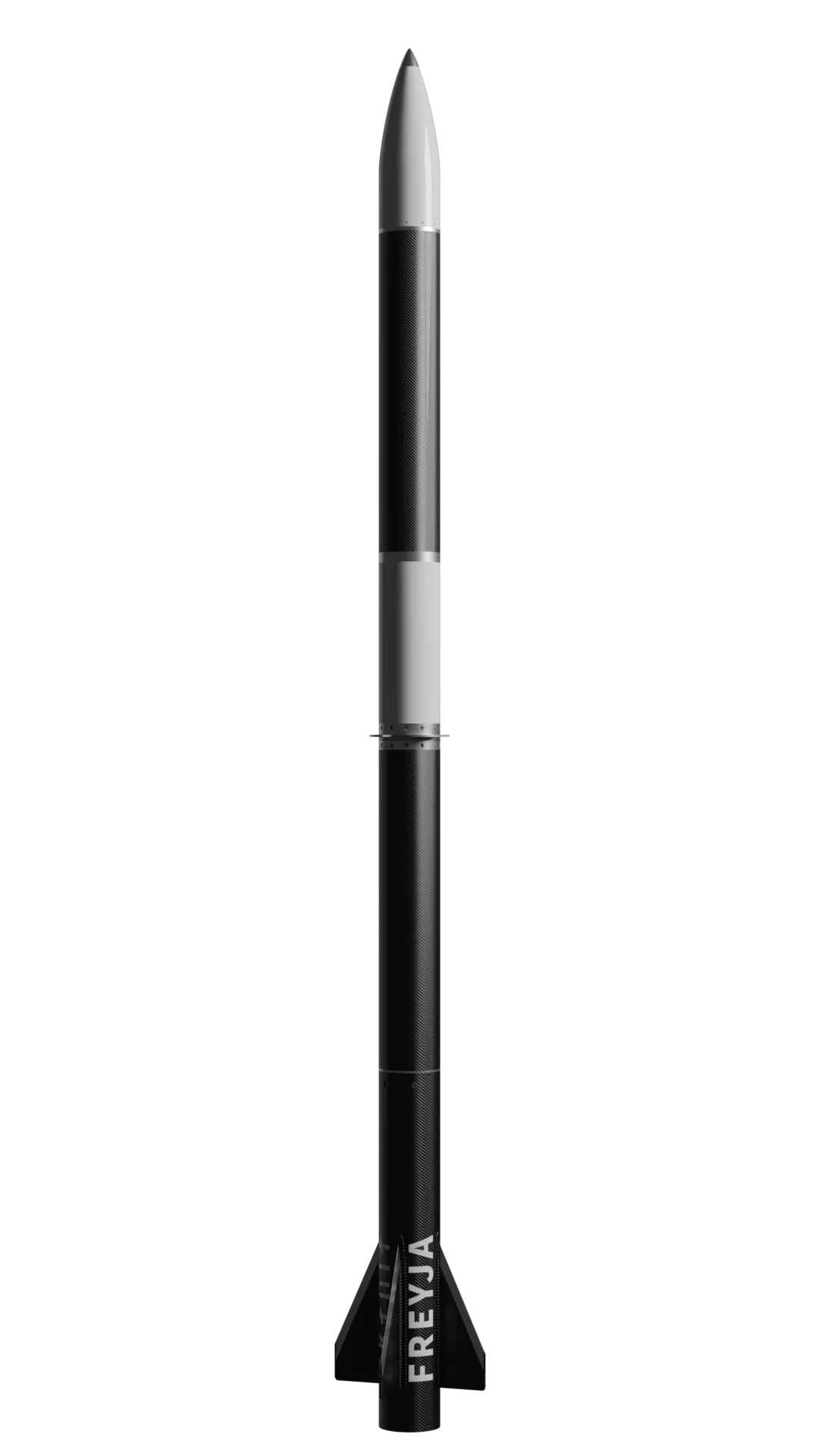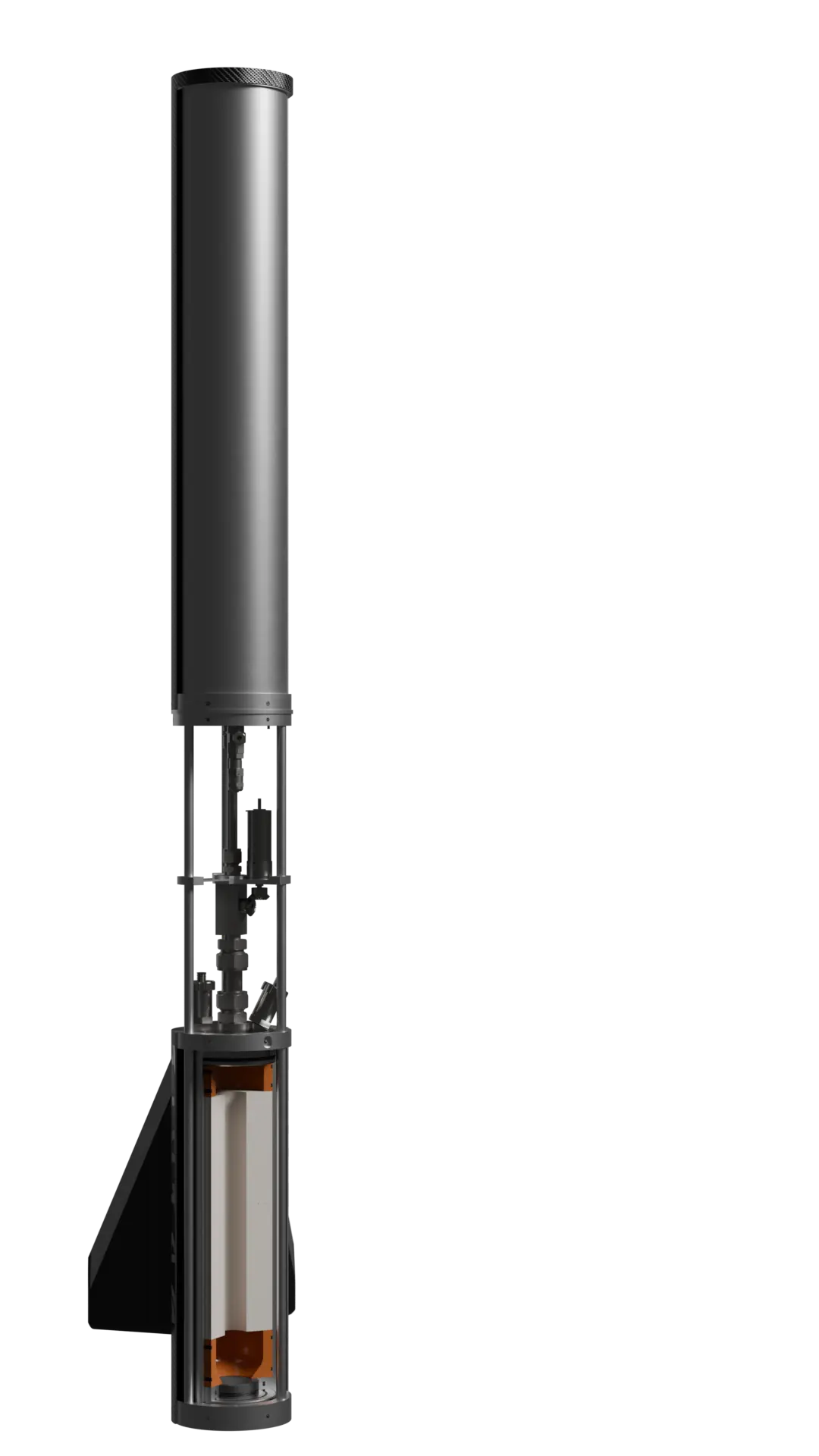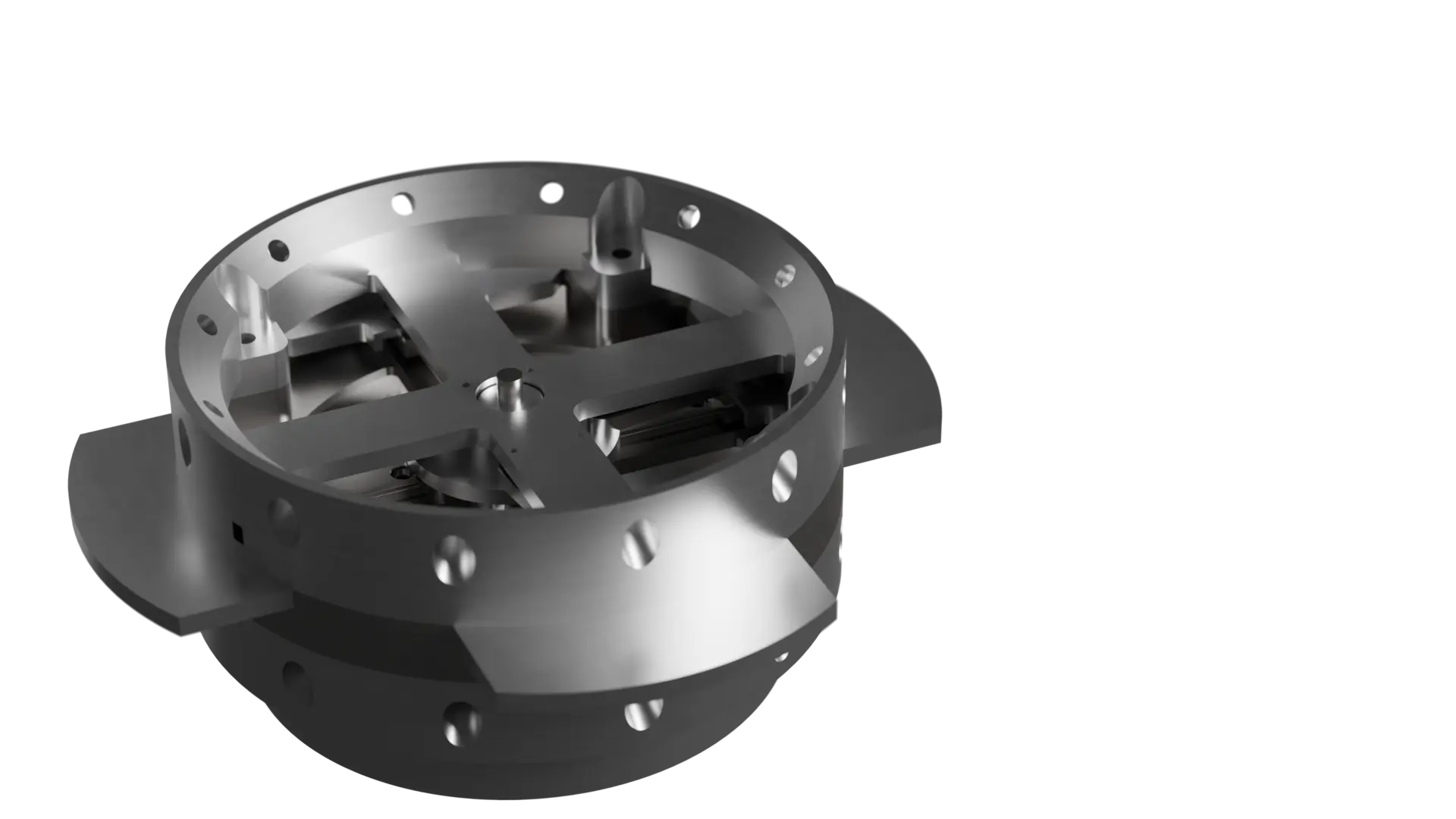Freyja
(EuRoC 2025)
Freyja is ÆSIR's next rocket intended to compete in the 3000 meter hybrid SRAD category at EuRoC 2025. It will be powered by ABS as the solid fuel grain and NOx as the oxidizer. Following the successful launch and recovery of our Signý rocket at EuRoC 2023, and leveraging ÆSIR's experience with hybrid rockets (Sigmundr, Mjollnir), we're working on bringing Freyja, our next iteration of a student researched and developed hybrid rocket to EuRoC 2025.
To follow the development of the Freyja rocket, keep an eye on our social media channels for more real-time updates.
Airframe
The air frame of Freyja consists of multiple segments. Most of the segments are made of carbon fiber composite manufactured in a wet layup process. Where radio transparency is required, e.g. the Avionics Bay and the Nose Cone are instead made of fiberglass. These segments are put together using radax (radial axial) joints manufactured in our workshop.
To aim for the target apogee and high score in flight performence, we have designed and manufactured an airbrakes module to control the flight profile in the coasting phase of the flight. The Airbrakes consists of 4 extendable blades connected through link-arms to a central hub where it's activated by a servo motor.
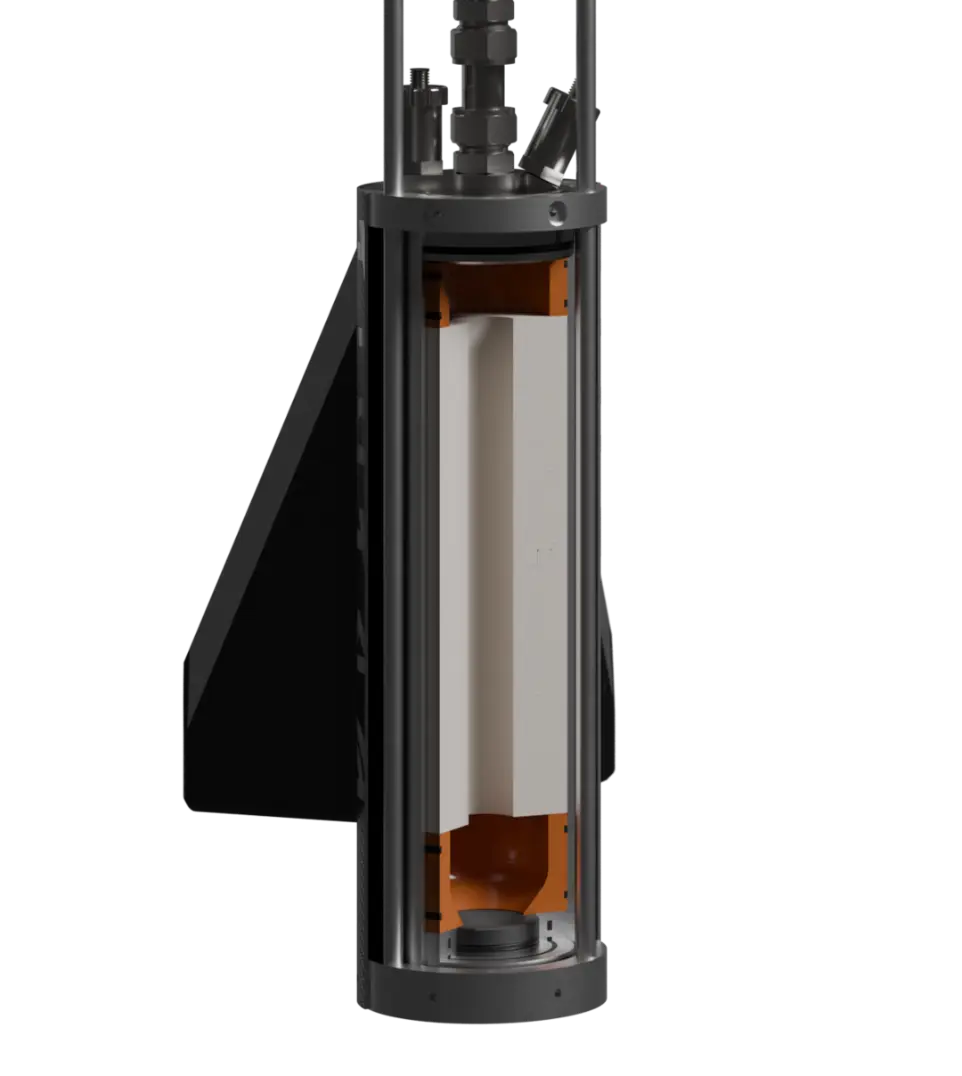
Propulsion System
Freyja is propelled by a hybrid engine featuring Nitrous Oxide (N2O) as the oxidizer and ABS as the solid fuel. The fuel is housed in the combustion chamber, where the oxidizer is injected and ignited, consumes the solid fuel, and all the combustion products are forced through the nozzle, which compresses them and raises their exhaust speed, propelling the rocket forward.
Using ABS as solid fuel has allowed us to explore more intricate fuel grain geometries, such as sinusoidal or wagon-wheel, and introduce twists along the longitudinal axis. From the ignition pellets to the fuel grain itself, the entire propulsion system is designed in-house, and as much of the manufacturing as possible is done by us in our workshop.
Recovery System
Freyja will have a recovery system designed to ensure its safe descent once it has reached its apogee, targeted at 3000m high. The system has been developed with modified COTS airsoft components combined with custom 3D-printed pieces.
After reaching its maximum altitude, a set of carbon dioxide cartridges is punctured, pressuring the recovery bay and decoupling the nose from Freyja's main body, releasing the parachute from the bay in the process.
The single canopy parachute will initially be reefed, allowing a controlled 2 stage descent.
When the onboard computer detects that Freyja has descended below 450m a pair of line cutters will release the reefing line, deploying the parachute to its full extent.
Avionics & Electronics
Inside the Freyja rocket resides multiple Avionics subsystems whose main tasks is to regulate certain parameters inside the rocket as well as handling communication between subsystems both inside and outside the rocket. Though this is common for any rocket, the Freyja rocket truly stands out with its custom made hardware.
Beginning with the Fjalar Flight Controller, it uses a STM32U5 microcontroller to handle most of the internal controls inside the rocket. Think of it as the rocket's brain that handles instructions that are sent and received to all subsystems. Not only does it contain a Barometer and GPS to determine the rocket’s location, but the telemetry also allows the Flight Controller to always know the current state of the rocket at all times. Though it was used for the Signy rocket for EuRoC 2023, the hardware is currently being updated to remove software bugs that were present previously.
Next up is the Barge, which is a 1W 2.4GHz telemetry modem that can both listen and transmit information from a CAN-bus. It uses an SX1280 LoRa transceiver for long distance communication and an STM32U5 microcontroller. A cool feature with this transceiver is that it supports time of flight ranging, meaning that the team can create their own positioning system by using the telemetry modem. As for the firmware, it is currently being developed with Rust.
Finally, we have the Ground Control Box. This box will act as a remote for Freyja, allowing for manual control by indirectly communicating with the rocket via a radio module. Not only will it be able to read parameters in real time from the rocket, but it will also contain the launch switch to initiate the rocket launch. The hardware of the box will consist of a STM32F5 acting as a microcontroller, while it will also contain a Raspberry-Pi as an internal computer handling the GUI as well as any calculations that are important for the user to read off.
